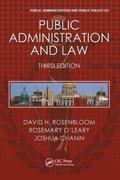Question
When Gloria's nonlabour income per day is $50 and she can earn an hourly wage (w) of $8, Gloria prefers not to participate in the
When Gloria's nonlabour income per day is $50 and she can earn an hourly wage (w) of $8, Gloria prefers not to participate in the labour market. Assume that she can work (or stay at home) up to 16 hours a day, so if she does not work at all then nonmarket time (h) equals 16. a) Show this situation in a graph using indifference curve analysis. Now show graphically how her decision might change when: b) her nonlabour income decreases to $30 c) wage increases to $10 (but nonlabour income stays at $50) Now assume that labour income is taxed at rate 0 < < 1. That is, if an individual's labour income is equal to w (16 h), her after-tax labour income is equal to (1)w(16h). d) Assume that, when the wage rate is $8, her nonlabour income is $50, and = 0.1, Maria's optimal choice involves 6 hours of work a day. Show the effect of an increase in from 10% to 30% on the number of hours worked - in which direction will it change? e) How would your answer change if it is only Maria's husband who suffers a tax increase?
Step by Step Solution
There are 3 Steps involved in it
Step: 1

Get Instant Access to Expert-Tailored Solutions
See step-by-step solutions with expert insights and AI powered tools for academic success
Step: 2

Step: 3

Ace Your Homework with AI
Get the answers you need in no time with our AI-driven, step-by-step assistance
Get Started


